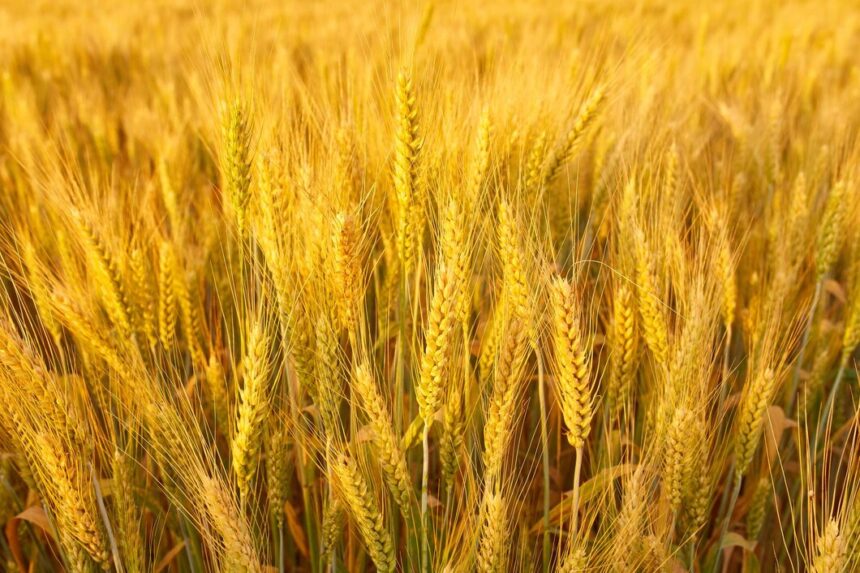Rye is a hardy cereal grain that can be a valuable crop for South African farmers due to its adaptability to various soil types and climatic conditions. Here’s a detailed guide on growing rye, covering each growth stage, required inputs and machinery, as well as management practices for diseases, pests, and fertilization.
Land Preparation
Site Selection and Soil Type:
- Soil: Rye thrives in well-drained soils with a pH of 6.0 to 7.0. It can grow in a range of soil types, including sandy loams and clay loams.
- Preparation: Test the soil for nutrient levels and pH. Use a soil conditioner or lime to adjust the pH if necessary. Prepare the seedbed by plowing to a depth of 20-25 cm to improve soil structure and remove weeds.
Inputs and Machinery:
- Plow: To break up the soil and incorporate organic matter.
- Disc Harrow: To refine the seedbed and level the soil.
Sowing
Timing:
- Season: In South Africa, rye is typically sown in late autumn to early winter (May-June) to take advantage of cooler temperatures.
Seeding Rate and Method:
- Rate: Sow 60-90 kg/ha of rye seed.
- Method: Use a seed drill or broadcast seeding followed by a light harrow to cover the seeds. Ensure proper seed-to-soil contact.
Inputs and Machinery:
- Seed Drill: For precise sowing and seed placement.
- Broadcast Seeder: For larger areas or less precision.
Germination and Seedling Stage
Germination:
- Temperature: Rye germinates best at temperatures between 5°C and 10°C.
- Duration: Seeds typically germinate within 7-10 days.
Water Requirements:
- Frequency: Ensure consistent moisture, especially during germination. Avoid waterlogging, which can lead to root diseases.
Vegetative Growth
Fertilization:
- Types: Use a balanced fertilizer such as 10-10-10 (N-P-K) or a customized blend based on soil test results.
- Application: Apply 60-80 kg/ha of nitrogen in early spring, following the initial soil preparation. Rye generally requires less nitrogen compared to other cereals.
Machinery:
- Fertilizer Spreader: For even distribution of nutrients.
Water Requirements:
- Frequency: Rye needs about 400-600 mm of water per growing season. Monitor soil moisture and irrigate during dry spells.
Inputs:
- Weed Control: Use mechanical weeding or herbicides as necessary. Rye competes well with weeds but may require additional management in heavy weed conditions.
Heading and Flowering
Monitoring:
- Watch for Diseases: Rye can be susceptible to rusts, mildew, and leaf spots. Early detection and treatment are crucial.
Pesticides and Herbicides:
- Rust and Mildew: Use fungicides if symptoms appear. Apply based on local recommendations and disease severity.
- Weeds: Apply broadleaf herbicides if weeds are problematic.
Harvesting
Timing:
- Maturity: Harvest rye when the grain is firm and the moisture content is around 15-18%. This is usually 6-8 months after sowing.
Machinery:
- Combine Harvester: Use a combine harvester to efficiently harvest and thresh the rye. Ensure it is set to handle small grains.
Storage
Post-Harvest Handling:
- Drying: Dry the rye to a moisture content of 12-14% before storage to prevent mold and spoilage.
- Storage Conditions: Store rye in a cool, dry place with good ventilation. Use clean, sealed bins or silos to protect from pests.
Inputs and Machinery:
- Grain Dryer: For drying if moisture levels are high.
- Storage Bins: To keep the harvested grain secure and in good condition.
Pest and Disease Management
Common Issues:
- Insects: Watch for pests like aphids and beetles. Use appropriate insecticides if infestations occur.
- Diseases: Manage fungal diseases with fungicides and crop rotation to reduce pathogen build-up.
Pesticides and Herbicides:
- Application Timing: Apply as per the recommendations based on pest or disease thresholds.
Growing rye in South Africa involves careful planning and management throughout each growth stage. From land preparation to harvesting and storage, proper inputs, machinery, and attention to soil, water, and pest management will ensure a successful rye crop. By following these guidelines, South African farmers can effectively cultivate rye and benefit from its adaptability and resilience.
Join 'Farmers Mag' WhatsApp Channel
Get the latest Farming news and tips delivered straight to your WhatsApp
CLICK HERE TO JOIN






